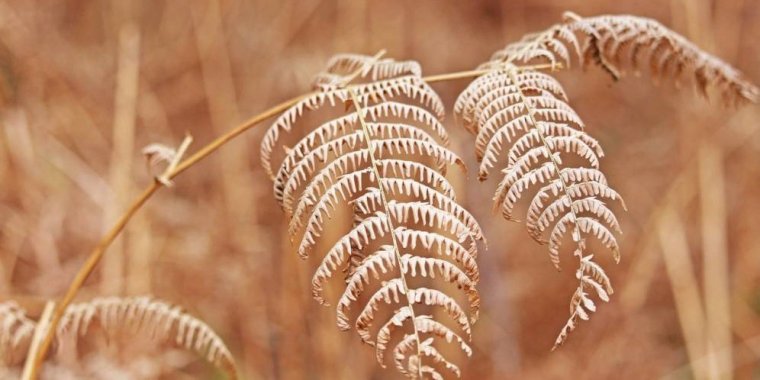| News / Science News |
Dried, pressed plants predict climate future
Dried and pressed plants are being matched with artificial intelligence to help researchers predict climate change impacts.

A dried fern plant.Photo: Kerstin Riemer/Pixabay
Scientists use herbaria — collections of preserved plant specimens — to study the phenology of plants, which reveals the timing of seasonal events, such as flowering, leafing and reproduction. The manual analysis of herbaria is a time-consuming process that involves annotating the number of visible reproductive structures.
But, the mass digitisation of herbaria will boost the field of phenology, says the international team taking a new approach to the analysis of the world’s almost half a million identified plant species.
“With access to all known herbaria, we could obtain data across very large geographical and temporal scales, which would enable us to develop phenological models capable of predicting plant behaviour in response to current climate change,” says Pierre Bonnet, a botanist at France’s Agricultural Research Centre for International Development (CIRAD).
These climate models will be built by drawing on information relating to the number, or proportion, of reproductive structures — particularly buds, flowers and fruit — that can be observed on each specimen.
Bonnet says the database of annotations could be integrated into predictive models. Plant phenology is a major indicator of climate change and its effects and is viewed by many as an ‘early warning system’ for future extreme weather events or changes in climate.
Bonnet acknowledges that images of plants cannot capture the full picture. He says that artificial intelligence is no substitute for botanical and environmental expertise, and the all-important physical specimens.
Bonnet suggests that digitisation, coupled with machine learning and analysis of herbaria, will make it possible to digitally preserve physical specimens that are prone to degradation due to heat, insects and physical handling. (SciDev.Net)
YOU MAY ALSO LIKE





